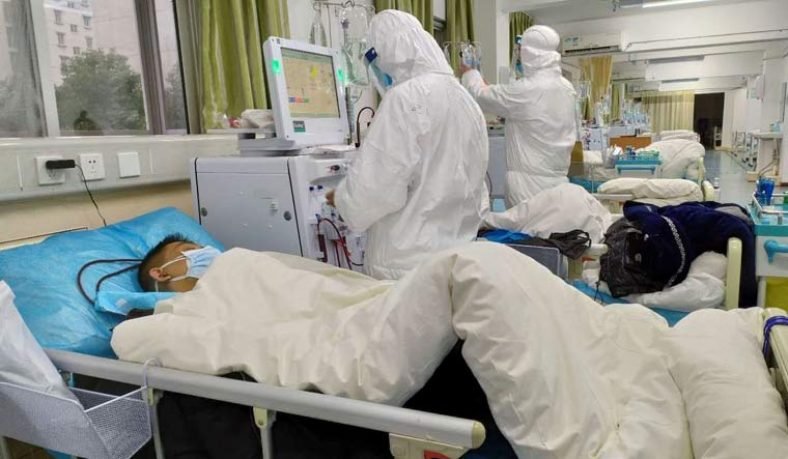
From arranging medicines or oxygen cylinders to transporting patients or the dead, if there’s one thing that the brutal second Covid-19 wave has taught citizens in India it is that the people are truly on their own. After oxygen concentrators, the next life saving medical device that may come to one’s mind is owning a ventilator. And why not? Ventilators start as low as Rs 70,000 while expensive models can cost around Rs 2 lakh.
| Cost | Starts in the price range of between Rs 70,000 and Rs 90,000. |
| What to remember | NIV requires trained medical supervisor to operate. NIV can’t and should not be used by untrained caregivers. |
| Doctor’s recommedation | Suitable for those recovering for Covid-19 under constant monitoring. |
| What’s the risk | Serious Covid-19 patients should be treated at hospitals only as monitoring of patient at home using an NIV is difficult. |
| Note | Talk to your doctor before buying and ensure trained caregiver is present with the patient always. |
While this amount may sound a bit too much for many, at the same time there’s a sizable percentage of the population in India who can afford it as well. After all, it is ‘less expensive’ than the down payment for a brand new car. The desperation to be adequately prepared to fight Covid-19 has also fuelled the idea as to why not create an ‘ICU at home’, if one can afford it. If there’s a family doctor who is always available on video calls, an ‘ICU at home’ is not a bad idea considering the scarcity of hospitals with oxygen and ventilator beds that was witnessed across India recently.
Now, there are two types of ventilators– Non-Invasive Ventilator (NIV) and Invasive Mechanical Ventilator (IMV). For home usage, you can only opt for a non-invasive ventilator as using a mechanical ventilator requires medical expertise. Note that a Non-Invasive Ventilator needs to be prescribed by a doctor. Here are all details you need to know about Non-Invasive Ventilators and whether you should buy one or not.
Non-Invasive Ventilator (NIV). The fundamental difference between an invasive mechanical ventilator (IMV) and a non-invasive ventilator.
What is a Non-Invasive Ventilator (NIV)?
The fundamental difference between an invasive mechanical ventilator (IMV) and a non-invasive ventilator (NIV) is that in invasive mechanical ventilation, an endotracheal tube is inserted into a patient’s throat and a high acuity ventilator takes over the mechanical function of the lung. IMV is conducted in a more critically ill individual.
“With an NIV, a fitted face mask is placed over the patient’s nose and mouth and the device supports the patient’s breathing by providing a predetermined level of pressurised air to the lungs. NIV as technology eliminates the need to insert tubes or sedate the patient and therefore is easier to be used, both by the patient and the healthcare professional,” explained Dr. Sibasish Dey, Head, Medical Affairs, Asia and Latin America, ResMed. For those unaware, ResMed is a medical equipment company.
Non-Invasive Ventilators require constant medical supervision and trained nurses at home
Dr Vikas Maurya, Director and HOD, Pulmonology, Fortis Hospital Shalimar Bagh, New Delhi said, “NIVs are used in hospitals as well and are an effective solution for treating patients. It is widely used by patients at their home for treating respiratory illnesses. But for treating Covid-19 patients at home, it’s a different story. Any kind of oxygen therapy requires constant medical supervision which may not be possible at home. Also, knowing when to put a person on a ventilator or regulating the oxygen flow requires expert supervision. For Covid-19 cases, the situation may deteriorate very quickly and ventilators alone cannot help a patient. You need constant medical supervision. If any family doctor suggests someone to use an NIV, he should explicitly tell the patient’s family about the risks associated with just relying on an NIV.”
Dr Dey from ResMed also stressed on the fact that “the patient needs to be conscious and willing to cooperate during NIV procedure.” He also warns that an NIV can’t and should not be used by untrained caregivers.
“NIV requires frequent monitoring and titration amongst many other practices. Mask seal problems and leakage are common problems associated with NIV use, and therefore trained nursing professionals are recommended for any patient on NIV or bilevel ventilation. Patients who are not responding to NIV within a clinically defined time period are planned for invasive mechanical ventilation,” Dr. Dey stressed.
He also added that in chronic situations or in conditions where long term NIV is required, cloud connected NIVs can support remote monitoring as these devices can monitor patient data and provide a trend that can be clinically evaluated. So, in such situations a nursing staff/pulmonary technician must set up the device for the patient and monitor its impact for at least four days to a week.
Can Non-Invasive Ventilators at home help treat Covid-10 patients?
Dr. Maurya mentioned that an NIV could be an ideal device for someone recovering from Covid-19. “Once the patient is out of danger and requires an oxygen flow of less than 3 litres per minute (LPM) then he/she is considered as stable and can be transferred to a home setup and it is then that one can rely on an NIV. Even if the situation goes bad, at least the family members will have some time to respond.”
“For Covid-19, World Health Organisation’s (WHO) guidelines advocate using NIV and CPAP (Continuous Positive Airway Pressure) at an early stage of the infection to prevent aggravation of the symptoms and as a bridge therapy. Currently, Ministry of Health and Family Welfare (MoHFW) guidelines for Covid-19 recommend NIV for severe diseases. NIV has lesser oxygen consumption than High-flow nasal cannula (HFNC), which is an important consideration in today’s scenario,” explained Dr. Dey.
What is the cost of Non-Invasive Ventilators?
The cost of a basic NIV starts from Rs 70,000 – 90,000 and can go up, depending on the model and the features required. It can be purchased directly from the manufacturer, licensed dealer or from e-commerce websites such as Amazon. You should ask your doctor with the contact details of verified distributors of such devices.
What you should remember while buying Non-Invasive Ventilators and how to use them?
Dr. Dey explains that there are a few things one should remember while purchasing, setting up and using an NIV device under a prescription from a doctor. These are:
-Careful device selection according to available guidelines, clinical judgement, and known risk factors and predictors for NIV failure.
-Choose the correct mask. Oronasal mask is recommended, and size should be appropriate.
-Non-vented mask with exhalation port and an anti-viral filter is recommended for COVID-19 management with NIV.
-Consult a pulmonologist who can guide the patient about the model/type of NIV required and the advocated settings.
-The purchase of an NIV/Bilevel therapy machine must always be from a verified or licensed manufacturer to avoid getting fake devices.
Other important things you must keep in mind when buying a Non-Invasive Ventilator
You need to follow the steps before using a Non-Invasive Ventilator:
-A pulmonary technician/nursing staff is essential while setting up the device and guiding the patient to use it. In the case of Covid-19, the basic vitals of the patient require regular monitoring.
– Do not set up NIV on your own unless you are familiar with the equipment, circuits, masks, etc. and are confident about how to safely establish the patient on NIV.
-Leakage, pressure damage on the nasal bridge, claustrophobia and throat dryness are common problems associated with mask usage. Medical intervention is required for the patient to comfortably use the device.
-The patient must be counselled beforehand and allowed the opportunity to practice breathing with the ventilator. Either the technician can hold the mask in place or assist the patient to have it in place.
-Regular cleaning of mask and tube is a must to avoid any infections.










